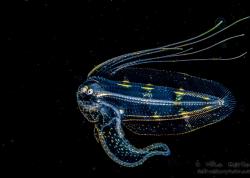Critters in Ambon Photo Essay
The secret to diving in Ambon is simply diving in Ambon.
The Maluku (Mah-loo-koo) Islands are sandwiched between Sulawesi and Western Papua in the country of Indonesia. Historically the islands played a major roll in the worldwide spice trade, earning them the nickname the “Spice Islands”. Today, Maluku and Ambon are well known throughout the underwater photography community as a prime destination for critter hunting.
Ambon has very few dive resorts and even less people diving there at any given time of the year. The best resort on the Island is definitely Maluku Divers. What makes the diving so special at Maluku Divers is true to the resorts motto, “Critters without the crowds” as most days you won’t see anyone else in the area outside of your dive group or other divers from the resort. The owners recently upped their game by securing a new management team then added some of the best guides in the area that are sure to impress even the most demanding critterhead.

The critters in Ambon change seasonally but it remains a reliable destination for rhinopias, unusual nudibranchs, ghost pipefish, ornate crustaceans such as harlequin shrimp, tiger shrimp and hairy shrimp and of course the possibility of seeing the now famous, Ambon frogfish.
Ambon fits the bill as an “exotic” destination but does so while remaining quite easy to get to from anywhere in the world. Most days are calm, quiet and diving is priority number one!
Ambon Underwater Macro Photos

Commensal shrimp seem to be very common here and can be found on many variety of nudibranchs, sea cucumbers and other organisms. This giant plurobranch had 2 Emperor shrimps (Pereclemenis emperador) living on it keeping its gills clean and tidy and although they were quite active I was still able to catch one with pink headlights.

The Nudi (Miamira tenua) are often found with commensal shrimp living on them. The smaller shrimp on this large nudi exaggerated the scale a bit when I first looked at it. After watching for a few minutes I carefully tried to get myself below the nudi as much as could to really force the perspective and even though both subjects remain small, it looks quite large.

I love shooting fish behavior at cleaning stations with my 105mm lens. The 105 is an easy choice because it enables me to gain some reach on my subject and its ability to capture tack sharp images. While I was watching these ring-tailed cardinalfish (Apogon aureus), I noticed that several of them had a little hitch hiker attached to them. The Isopod parasites are normally cleaned off when they are smaller either by a cleaner wrasse or shrimp. Somehow, these poor cardinal fish seemed to have missed the bell as these parasites are reaching a perilous size.

Short haired A.striatus were well represented during our short one week stay in Ambon. Finding subjects like these is always cool, but capturing their behavior is even better. Using its lure to draw in its prey, the hairy frogfish exerts very little energy when it hunts and can go a very long time between meals.

This set of Harlequin Shrimps surprised me because the smaller of the two was so vibrant in color. Most that I have seen this small have remained pale in color and difficult to photograph. Using my Aquako #3 magnifier, I concentrated on the smaller subject as I felt it was more unique in this image.

Watching this very small Nudi (Pectenodoris trilineata), I realized I could actually see the eggs coming out of it as it was laying them.

A lovely and very small nudibranch known as the (Sagaminopteron sp) has only one forward sensory organ, and when it wants to move it will often flutter its skirt and fly through the water like a pelagic butterfly.

I love searching the soft corals for snapping shrimp and other gems like this common soft coral ghost goby (Pleurosicya blodinghi). Small and pale, well hidden between the smaller branching polyps of the coral.

The loud, low pitched grunting sound of my guide Ali alerted me to something that must be good. As I swam towards him I saw the telltale glow of the infamous local Yellow Rhino (Rhinopias frondosa). The Rhinos are an ambush predator that mimics an injured fish when they move across the substrate with a clumsy yet effective crawl. Unsuspecting prey that move in to investigate are overwhelmed by the speed and powerful strike of the Rhino, seemingly without warning. Once the unsuspecting fish is within range, they rarely make it out alive. Using my Subsee Snoot, I tried to frame the facial features of the Rhinopias to highlight the intricate features and to create some negative space behind it for contrast.

Wait for it! The Rhinopias (Rhinopia eschmeryi) is a lovely and regal beast that has earned its seat as the ultimate holy grail critter find anywhere. They come in many colors, but all share a few key traits that make them so darn interesting. Nicknamed the paddle-flap scorpionfish for their large bushy eyebrows, the eschmeryi’s paddleflaps hide their eyes from predators above. The lightning fast gape strike of its extensive and expansive jaw is an impressive show and always worth waiting for.
Photo Tip
To shoot a photo series as a Rhinopia yawns, try increasing your ISO and decreasing your strobe power. Remember, you might only get one or two well-lit images, so use the strobe dumps wisely or spray and pray. Either way, wait for it!
Special Thanks to Maluku Divers:
-
Visit Maluku Divers with Bluewater Travel
-
More info on Dive Travel to Ambon and Alor, Indonesia
Further Reading
RECOMMENDED ARTICLES
SUPPORT THE UNDERWATER PHOTOGRAPHY GUIDE:
The Best Service & Prices on u/w Photo Gear
 Visit Bluewater Photo & Video for all your underwater photography and video gear. Click, or call the team at (310) 633-5052 for expert advice!
Visit Bluewater Photo & Video for all your underwater photography and video gear. Click, or call the team at (310) 633-5052 for expert advice!
The Best Pricing, Service & Expert Advice to Book your Dive Trips
 Bluewater Travel is your full-service scuba travel agency. Let our expert advisers plan and book your next dive vacation. Run by divers, for divers.
Bluewater Travel is your full-service scuba travel agency. Let our expert advisers plan and book your next dive vacation. Run by divers, for divers.

































